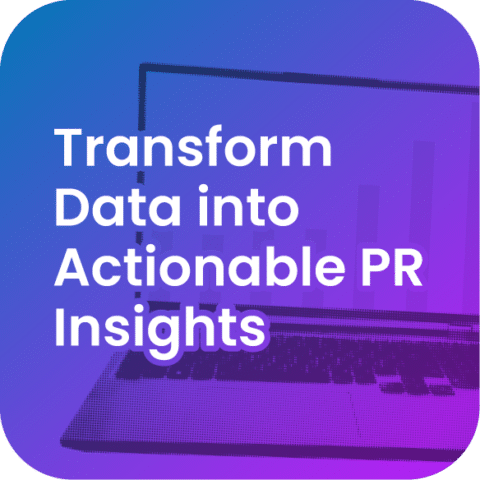Is your business in an industry that doesn’t typically get much media coverage? The media shapes what people think matters. If your industry isn’t on their radar, you’re already fighting an uphill battle, and this is a common situation in many more industries than one might realize.
“Take logistics, for instance,” says Adrian Iorga, Founder & President at 617 Boston Movers. “Most people don’t care how their package gets to their door. They just expect it. Until something breaks, no one thinks about what makes logistics work.” He adds, “Even when a big story hits our industry, if it doesn’t affect you personally, you won’t care. Journalists know this, and that’s why they often skip these stories.”
But that silence comes at a cost. When your industry gets ignored, so do the companies in it. No media coverage means less visibility, fewer investors, lower trust, and little or no brand awareness.
What makes this even worse is the fact that if journalists have already decided your space is not “newsworthy,” you’re probably not going to change their minds. The good news, however, is that you can change your approach using the tips we’ll share in this article. Let’s get started!
Why the Media Might Be Ignoring Your Industry
An honest assessment of your industry is a good place to start. Is it too boring to appeal to the mainstream consumer? If yours is not an industry that typically features big stories or produces eye-catching headlines, then it’s easy to understand why journalists might be shy.
Beatus Hoang, Sr. Growth Manager at Exploding Topics, agrees that it all comes down to public interest. “As a general rule,” she said, “journalists chase big stories, and the truth is that the average consumer loves to get entertained more than informed. Thus, if your industry doesn’t have some entertainment value, it may easily get overlooked.”
You also have to factor in the fact that most news organizations are, themselves, struggling for attention, with headlines getting swallowed by buzz topics like AI, climate disasters, or election chaos, depending on the season. If you further factor in variables like editorial biases and economic cycles, and it’s easy to see why even big wins in your sector might never make the cut.
Strategic PR Pivots When Media Isn’t Biting
If the spotlight isn’t coming, you’re going to have to do something about it yourself, with a strategic digital pivot. Here’s how:
1. Own Your Channels
According to Eric Do Couto, Head of Marketing at Visualping, “The first step to a strategic PR pivot is taking control of your own spotlight by owning your own channels. You can start a podcast, launch a blog, or a regular newsletter. You don’t need a journalist to validate your story when you can tell it yourself.”
Just make sure what you’re putting out isn’t generic. In a media environment oversaturated with copycat messaging, originality is your greatest asset.
If you’re not sure what to post, you can start with real stories such as client successes, team insights, lessons learned, and so on.
2. Leverage Industry-Specific Media and Communities
Forget mass media for a moment. Focus on where your actual buyers, partners, and peers hang out. Trade magazines, niche podcasts, and LinkedIn groups are always a sure bet. The audiences might be smaller, but they’re relevant and engaged, and that often leads to higher ROI.
As Ben Bouman, Business Owner at HeavyLift Direct, shares, “Your biggest wins may not come from the front page of a newspaper. You may find that they’ll very often come from typically underrated sources like a one-page feature in an industry trade journal. When you speak directly to the people who matter, you have a ready and willing audience, so you really don’t need a megaphone to get your message across.”
3. Align with Broader Narratives
Your industry doesn’t exist in a vacuum. To plug into mainstream consciousness, you need to find places where the industry intersects with the cultural moment. For example, if your industry is being affected by mainstream issues like inflation or climate regulations, you’ll have an excellent opportunity to reclaim some of the spotlight.
4. Create Your Own Data and Reports
Offering insightful information is always an excellent lead generation strategy for marketing, and it works the same way with PR. One of the surest ways to get the attention of journalists is to conduct surveys and publish relevant, reliable stats.
Jeffrey Zhou, CEO and Founder of Fig Loans, breaks it down this way: “Want people to pay attention? Offer them something of value that catches their attention organically. When journalists go hunting for credible data, your research might be what they quote.”
5. Partner with Influencers and Micro-Voices
Partnering with influencers is a great way to give your PR a boost. And you don’t need celebrity influencers to make an impact. Instead, simply focus on respected voices your audience already trusts, like a supply chain expert on LinkedIn or a finance blogger with a loyal email list.
According to Sean Shapiro, Managing Partner at Axia Advisors, the key is relevance. In his words, “It’s not about the size of the spotlight, what really matters is whose attention you’re earning. When you partner with credible voices your audience already trusts, you bypass the noise and build real engagement.”
Partner with them to create authentic, useful content. Their audience becomes your audience, no press release needed.
6. Maximize Owned Media SEO
Search engine optimization (SEO) plays an increasingly important role in modern PR. Like everyone else, journalists tend to search for information on Google. This means that you can improve your chances of getting your stories across simply by being discoverable online. This is particularly important to do in cases where you’ve found an intersection between your industry and mainstream issues. Here are some of the top tips to help you boost your PR with effective SEO.
Conclusion
If the media’s not telling your story, then take charge and tell it yourself. By owning your message, choosing your channels wisely, and aligning with what people truly care about, you can make your brand impossible to overlook for the people who matter most, even without a front-page headline. For your next read, we strongly recommend our guide to the dos and don’ts of using humor in PR campaigns.




